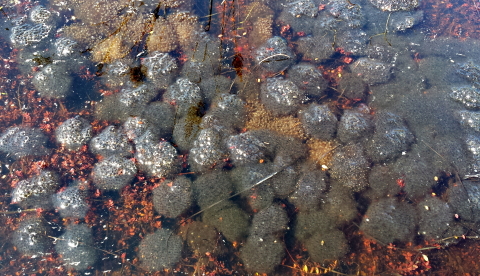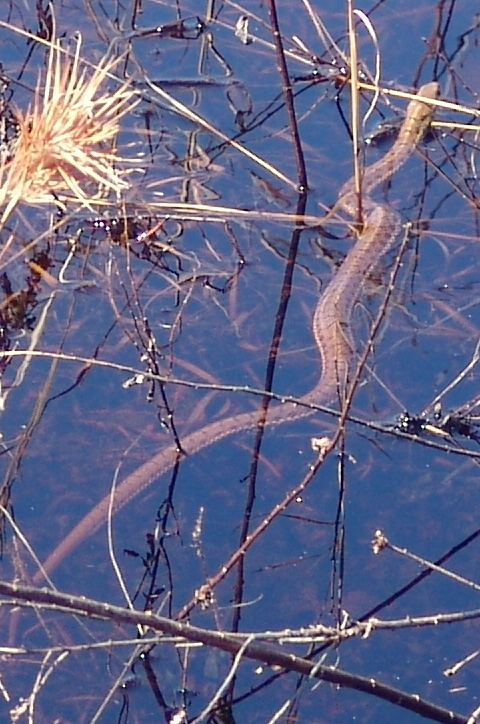Gorgeous 4-Year-Old Female Spotted Turtle (Clemmys guttata)
Springtime on the SouthCoast yields discoveries and adventures for the Turtle Journal team. Â The weekend treated us with spotted turtles at a number of SouthCoast sites, including this magnificent young female spotted turtle that weighed 2 1/4 ounces and measured less than 3 inches long.
SouthCoast Grassi Bog (Former Cranberry Bog)
On Sunday, April 6th, we ventured to the Grassi Bog on the SouthCoast to search for spotted turtles and a potential mating aggregation. Â We observed a few painted and spotted turtles basking on inaccessible grass hummocks in the flooded pond. Â We walked around the edge of the bog, searching for spotteds, and we heard the telltale “plop” of a turtle plunging off a basking perch. Â We just caught glimpse of a spotted shell submerging into the murky ooze.
Female Spotted Turtle Hiding in Plain Sight
While on land spotted turtles seem bright and gaudy, their color, shape and pattern blend perfectly into the background of a swampy bog. Â In other words, they disappear while hiding in plain sight. Â The photograph above illustrates the challenge we face in finding spotted turtles as they bask in indirect sunlight six to eight inches below the surface of the pond. Â Remember: Â You have the advantage of knowing that there is a spotted turtle in this picture. Â Researchers are scouring acres and acres of swampy bogs at a fast pace trying to find them.
Sue Wieber Nourse Examines 3 Female Spotted Turtles
Fortunately, Sue Wieber Nourse is an expert turtle researcher, and she discovered three female spotted turtles basking and hiding beneath the surface of the swamp. Â Sue perilously plunged into the flooded bog and immediately sank hip deep as she snagged the unsuspecting turtles. Â These specimens ranged in age from four to ten years old, in weight from 2 1/4 to 4 ounces and in shell size from 2.8 to 3.6 inches.
~ 4-Year-Old Female Spotted Turtle from Grassi Bog
The little one was adorable. Â Her brightly colored neck spotlighted her gender since spotted turtles exhibit sexual dichromatism. Â Males have drably colored grayish necks.
Three Female Spotted Turtles from Grassi Bog
All three ladies were processed, marked for future identification and released back into the wild at the same location where Sue had captured them. Â When we returned to Grassi Bog on Monday, we found the elder female in roughly the same spot, and captured a 5.5 ounce male nearby. Â This area of Grassi Bog seems optimal for a spotted turtle mating aggregation.





















